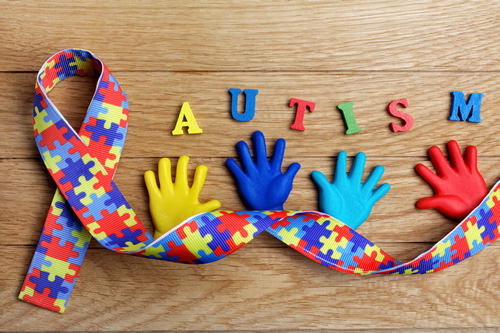America, we may have a problem.
The CDC recently announced new prevalence rates for autism. The increase from 1 in 68 to 1 in 59 children identified as having autism spectrum disorder (ASD) is significant because we know that 95-97 percent of children with autism are being served in America’s public schools.
With lifetime costs for our current school-aged population of children on the spectrum estimated at between $1.4 and $2.4 million per student, the new numbers present continuing staffing, fiscal, and in some cases facility challenges. However, this does not have to be “doom and gloom” for an already stressed educational system. This is the time for school and school system leaders to shift what they think, how hey think, and ultimately what they do to build the requisite skills, knowledge, and experiences for our students with ASD.
Over the past two years, I have dived deeply into the world of ASD. After a career in education, I was introduced to an innovative use of new technology that creates engagement, access, and opportunity for life-changing impact. When children on the spectrum learn to self-regulate in a humane and civil manner, they are empowered. Empowerment leads to building other skill sets, such as social and emotional understanding, that will assist them their entire life. To truly educate these students, educators must embrace three challenging ideas.
1. Engagement is learning.
Though it may appear as teetering on the obvious, students who are engaged learn. Children with disabilities and those with autism are no exception.
Research is replete with evidence about the power of engagement. We tend to not accept, however, that neuro-diverse students, especially those with autism, can and will engage in their own learning, increase their attention and focus, and participate in meaningful learning experiences. Learning requires not only engagement but also empowerment. Empowerment comes from explaining, modeling, understanding, reinforcement, and repetition.
2. Learning is not telling.
Many subscribe to a theory and practice of “training” individuals with autism through the use of rewards and punishment. I have heard such absurd examples as rewarding time on task with pieces of bacon every 30 seconds, a piece of licorice, or a tablespoon of pudding. Withholding these “treats” has been used as punishment for not being on task or for not exhibiting the targeted behavior. This sort of operant conditioning, the foundation for behavioral modification, had its birth as a practice for training animals—not humans. Though my colleagues who subscribed to behavioral modification and the punishment and reward theory of training will fervently disagree, children with autism are uniquely human. We need to work with them as such.
Rewards and punishment do not in and of themselves create “ownership” of behavior. Haven’t we learned this lesson? We’re more motivated to act when the impulse comes from an internal locus of control, not because we are being told to do something.
The ability to explain a situation or context and then to visually model the targeted behavior consistently is a function of new technology. No human can repeat her/himself the exact same way, at the exact same pace, with the exact same emotion. It’s impossible. This is why I believe that our facially expressive, humanoid, social robot programmed to speak slower than humans do and designed to repeat itself over and over again is a solution to the challenge of repetition, consistency, and accuracy.
3. Robots should not and will not replace teachers.
The fear that robots will replace certain human functions is real. However, when it comes to teaching students with ASD, the answer is “no way, no how!” The goal of therapy, especially using robots, is to engage, enhance, and accelerate a students’ progress towards clear and appropriate human-to-human interaction.
Challenging mental models
When considering the growing population of students with autism, we must challenge our prevailing mental models. Those pictures in our minds that influence our actions, whether good, bad, or indifferent, are entrenched; and when they’re challenged it brings out defensiveness, resistance, and various expressions of recalcitrant behavior.
As Senge and others have written and discussed, mental models are imperfect. They are our thinking tools we use to understand life, make decisions, and solve problems. Though they often guide our perception and behavior, we seldom see their import, accuracy, or constraint on programs and practices that don’t realize the desired or expected results. Yet we continue year after year with programs and practices that in some cases work against the very outcomes we are seeking.
As we shift our mental models, we must shift the tools we use to engage learners, especially those with ASD. The technology we use with students on the spectrum must serve as a lever to help those students go further and faster. Equipping staff with the technology to engage and empower learners will help them achieve life-changing impact.
I see the next five to seven years as a tremendous opportunity for educators to step up to provide transformational learning for students on the spectrum. To do so will require several shifts in thinking and practice. School and school system leaders have some incredibly important decisions to make about whether or not their staff will have the tools to meet the needs of children with autism.
Dr. Ron Edmonds said it best: “We can, whenever and wherever we choose, successfully teach all children whose schooling is of interest to us. We already know more than we need to do that. Whether or not we do it must finally depend on how we feel about the fact that we haven’t so far.” Our students with ASD deserve our shifting our thinking to do what is good, right, and true.
- How digital tools and AI can enhance social studies - April 23, 2024
- Using universal screening to improve student well-being - April 22, 2024
- 3 ways to avoid summer learning loss - April 19, 2024


